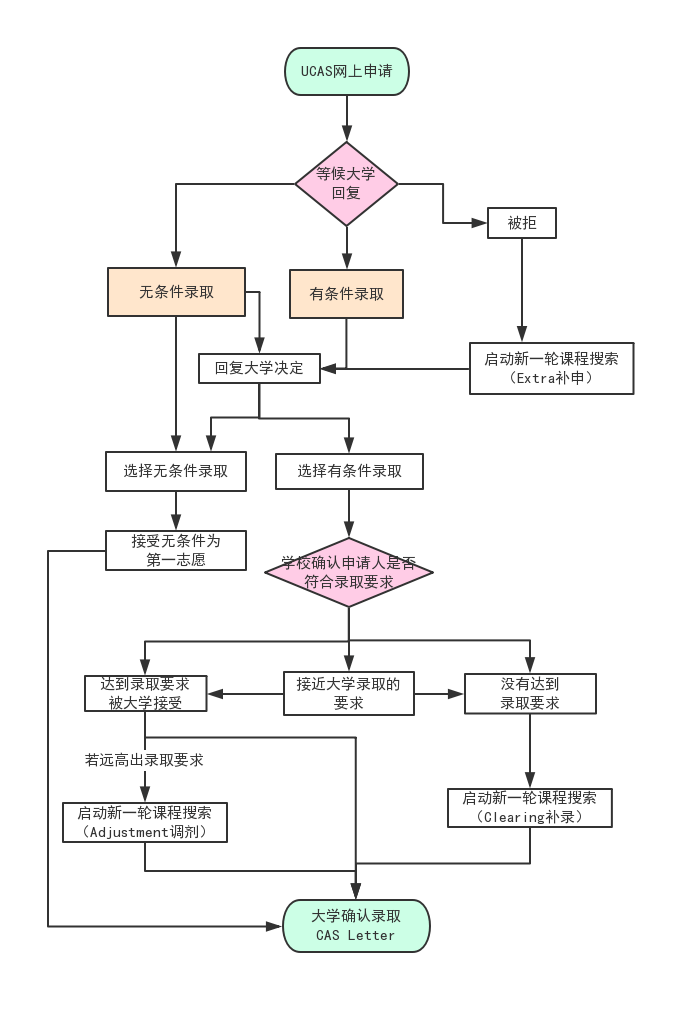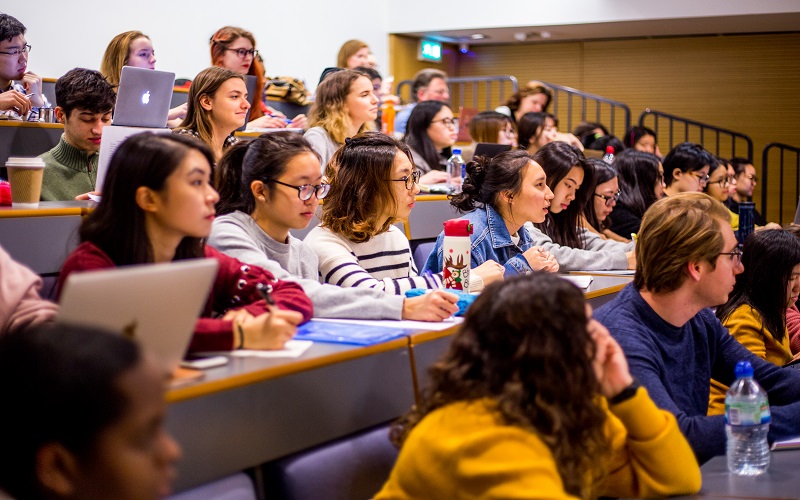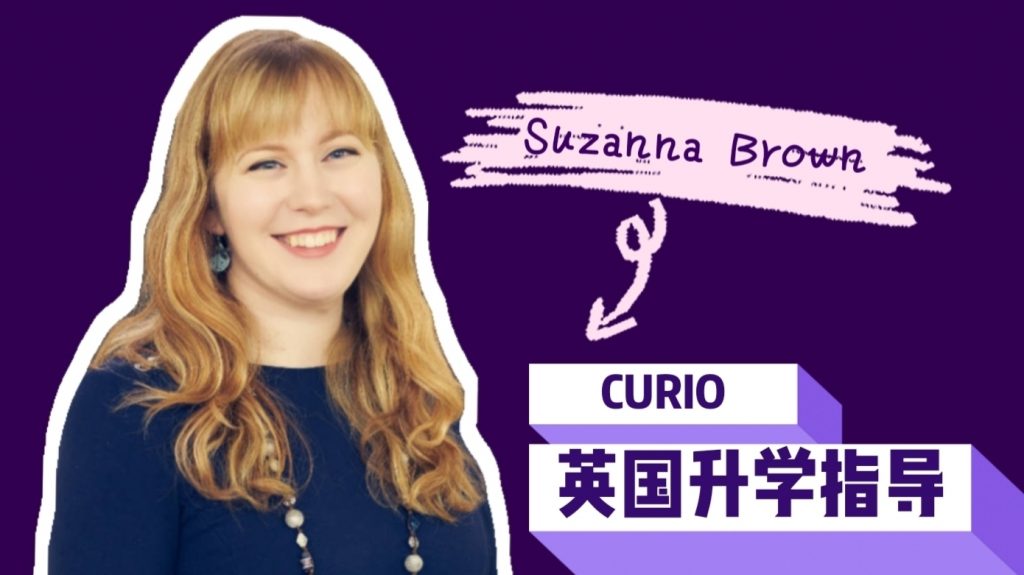

Studying in the UK: UCAS Strategy When Receiving Offers

CURIO’s UK Head Counselor, Suzanna will share knowledge to students focusing on UK education, UK G5 colleges, admission requirements, study abroad planning, background enhancement, essay writing, application procedures, scholarships, UK visas, accommodation, expenses and other important information to help you study in the UK.
▌COLUMN EDITOR
Suzanna Brown
With years of experience in international education, up to date knowledge of UK admission trends, native English speaker, and receiver of the British Council’s “Educational Consultant Qualification Certificate” Suzanna is committed to helping students carry out a comprehensive plan for successful studying in the UK.
▌This Week’s Subject ——
“After receiving an offer, what are the next steps?”
Congratulations! As an applicant, you are 80% there on the path to a U.K. School. There are still a few things to get done:
☑️ In-depth research and choose a major
☑️ Register UCAS UK undergraduate application system
☑️ Complete the online application and pay the application fee
☑️ School/Independent uploads recommendation letter
☑️ School/student submits the application online to UCAS system
☑️ UCAS system will process the application and send materials to various universities
☑️ Acceptance notice
☑️ Login UCAS Track to view the admission
❓ Mark in the system which is your first choice school and which is the second choice
❓Submit all final academic/language results for unconditional admission
After receiving your offer, it is important to be proactive.
Know what options you have, and how to choose your target and insurance schools appropriately? Take a moment to think about what to do if your grades go down.
▌Core Content ——

▌Q & A time
Question #1
Are you accepted when you get an offer?
Suzanna
After receiving the offer from a British university there are things to consider:
Conditional Offer.
As the name implies, students also need to meet certain conditions.
This notice may be issued because:
❶ your grades do not meet the requirements
❷ Your English proficiency does not meet the requirements, such as IELTS 7.0 or higher for some majors, 6 or higher for writing. If you do not meet the above conditions when you apply, but the school is still willing to offer you a place, they will send you a conditional offer. You must meet the requirements in order to gain acceptance.
Unconditional Offer
If you get this, you have met all the requirements of the school and have been formally accepted by the school.
Question #2
Now that I have a satisfactory admission, what should I pay attention to when replying to the university’s decision?
Suzanna
Don’t worry, you can wait till you get all the application results. Then make two choices in satisfactory admission:
Firm Choice
This is the number one school and major you want to go to, but the entry requirements may be relatively higher. If all the conditions are met, it will be your university.
Insurance Choice
A guaranteed school. Compared with the first choice, the entry requirements are usually lower, in case the first choice cannot be met.
Applicants don’t have to have an insurance choice, though it is highly recommended that they choose an insurance option. In line with consumer law and other advice, students have 14 days to change their minds after making their firm and insurance choices.
Note: If a student accepts an unconditional offer, they must decline any/all others.
Question #3
I don’t expect that my grades will be satisfactory. I haven’t been accepted by the university now, or I don’t like the first choice, but I still want to enroll this year?
Suzanna
Pay attention to UCAS Extra, for students who have not received any offers yet. (February 25-July 4)
This section is available to students in the event that all five applications are rejected.
Question #4
What are the possible changes to my application results after the high school courses/language scores are all scored in July-August?
Suzanna
Some universities will wait until the A-Level test results are announced on August 15th to finally confirm whether the students have met the admission requirements.
If students do not meet the admission requirements, they will also confirm internally as soon as possible whether they will be accepted.
So, there are four possible outcomes after receiving your new grades:
❶ Meet the firm choice entry requirements?
Congratulations, your unconditional college admission notice has been locked down.
❷ Didn’t meet the admission requirements of the firm choice but met the insurance choice?
Congratulations, you will go to the second voluntary university
❸ Didn’t meet any admission requirements?
Start the UCAS Clearing steps as you may still have an acceptance.
❹Did much higher than expected?
Congratulations, you did so well! You can wait for the offer or try UCAS Adjustment
So here I suggest everyone:
- Some universities will wait until A-Level results release (15 August) to confirm whether a student has been successful/unsuccessful, particularly where a student has not met the precise conditions of their offer; however, they will try to confirm as soon as possible.
- A degree of flexibility in instances where students are unable to 100% meets their offer conditions–although unfortunately by no means guaranteed!
- Care with insurance choices–need to ensure students are prepared to study at that institution as well as Firm choice or can slow down the Confirmation and Clearing process.
- Ensure universities have received academic results–not all schools may be listed to receive scores.
Question #5
Only after being rejected by both the mu firm and insurance school, can I enter the Clearing Program. Is that true?
Suzanna:
UCAS Clearing, the final purpose of the final supplementary stage (early July to October) is to select the schools with the remaining places listed in Clearing each year, and then make further applications to eventually seek admission from a school.
There are 4 general situations for students entering Clearing:
❶ Did not receive any admission notice;
❷ Rejected all admission notices;
❸ Did not meet the first/second voluntary admission conditions;
❹ Applying after June 30th
Question #6
Can you explain what is UCAS Clearing in terms of the application process and precautions?
Suzanna
The colleges that UCAS Clearing finally enrolled are no longer candidates. There are a few important steps in the final supplementary steps that need to be treated carefully to ensure your smooth entry.
Check the remaining situations of each school on the official website.
❶ You can view it through the UCAS search tool: http://search.ucas.com/ or contact the school directly for inquiries.
❷ Contact the school and submit all grades electronically (such as high school transcripts / IB grades / A-Level grades, IELTS grades, etc.).
❸ If the university accepts your application, log in to the track interface and you will use the Add Clearing step.
❹ Fill in the information of university and major selection.
Pay attention to notices
University replies can be found in UCAS Track, so pay attention to emails in time.
If you haven’t communicated with the university in advance, it is very unwise to rush into clearing directly! This is a two-way action. Only if you ask the university and they also consider including you on their supplementary list can you fill in the relevant information on UCAS!
Question #7
What should I do if my final score is much higher than expected?
Suzanna
Congratulations! Students can use the UCAS Adjustment program (with up to 5 days to confirm in August) to help you find courses or colleges with higher entry requirements.
Students who may consider transferring are required to meet the following conditions:
❶ conditional admission to the First Volunteer University, and
❷ meet every condition on the admission notice, and
❸ the test scores are much higher than the first voluntary conditional admission requirements
Question #8
So how exactly is UCAS Adjustment used?
Suzanna
It should be noted that applications can only be adjusted within five days of registration. The sooner you sign up, the more likely you are to choose your ideal institution. If no suitable alternative is found within 5 days, the result will not be affected.
The difference between transfer and supplementary application is that there is no detailed list in the adjustment system, and you need to take the time to select it yourself.
It is strongly recommended that in this very busy admission time, that you do not make a hasty decision before deciding to register for Adjustment, after all, better institutions and professional competition is also large, and may not guarantee access to admission. Say hello and confirm that you will be accepted for admission, then register and submit your application.
Question #9
It seems that before getting unconditional admission a student must remain on top of things.
Suzanna
Yes, there is still half a year to work hard to get the final ideal result. The following is a flowchart, I hope everyone can understand more clearly after looking at it.
Students and parents can contact me through the QR code below if you want to get more personalized application planning or if you have more questions about the UK applications. Suzanna will be back next week with another column about “UK Admissions”
Suzanna will be back next week with another column about “UK Admissions”
Follow us on WeChat





